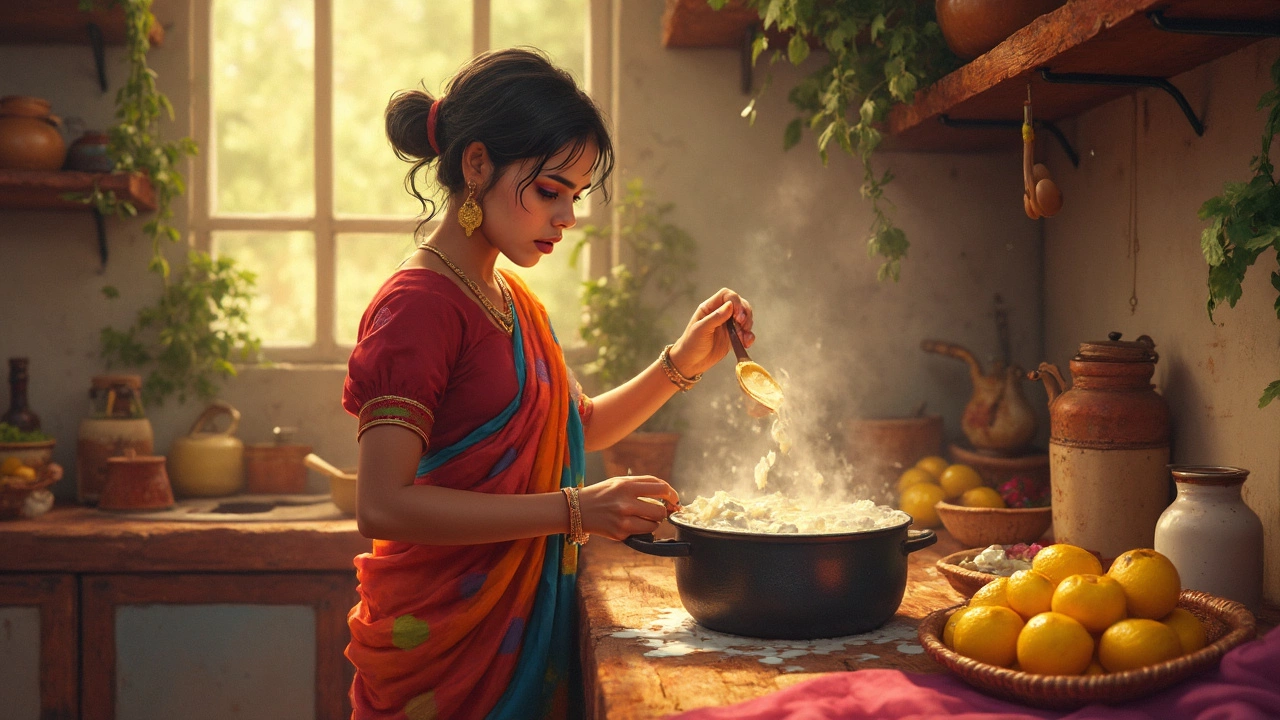Milk in Indian Cooking: Uses, Tricks & Science
When working with Milk, the white, protein‑rich liquid from cows, buffaloes or goats that forms the backbone of many Indian dishes. Also known as dairy milk, it adds moisture, richness, and a mild sweetness to stews, sweets, and beverages. A direct product of this liquid is Paneer, a fresh, non‑aged cheese essential for recipes like Paneer Tikka, Palak Paneer, and Mattar Paneer. When an acid such as Lemon juice, a natural source of citric acid meets milk, the mixture curdles, forming the basis for homemade cheese and certain regional desserts.
Milk isn’t just a background player; it drives key processes across Indian kitchens. It enables paneer production by providing casein proteins that coagulate under heat and acid. It requires the right temperature—usually just below boiling—to separate cleanly without scorching. The same protein network reacts to lemon juice, vinegar, or yoghurt, creating curds that can be pressed into cheese or added to curries for texture. Beyond cheese, milk enriches gravies like Korma or Navratan Korma, where a splash balances spices and adds a silky mouthfeel. Its calcium and vitamin D content also make it a nutritional anchor in vegetarian meals, complementing dal and lentil dishes that dominate the Indian diet.
Practical Dairy Tips for Home Cooks
Understanding how milk interacts with acids, heat, and spices helps you avoid common pitfalls—whether you’re curdling milk for paneer or trying to keep a curry from splitting. Use fresh, full‑fat milk for a richer paneer yield; low‑fat varieties produce a crumbly texture. When adding lemon juice, do it gradually and stir constantly to control curd size. If a recipe calls for simmering milk, keep the flame low and stir to prevent a skin from forming, which can affect the final consistency. These tricks show why milk is a versatile, go‑to ingredient across regional Indian cuisines, from the north’s buttery Dal Makhani to the south’s creamy Idli batter.
Below you’ll find a curated set of articles that dig deeper into each of these topics—how to pick the right milk for paneer, the science behind lemon‑induced curdling, and many more practical insights you can try tonight.

How Lemon Transforms Milk for Homemade Paneer Magic
Adding lemon to milk causes it to curdle, a fundamental step in making paneer at home. This process separates the milk into curds and whey, enabling the creation of a fresh, homemade cheese. Understanding how lemon acts on milk can enhance your paneer-making skills and offer better results. Explore the science behind this reaction and discover tips on achieving the perfect texture for your paneer. Dive into the world of homemade paneer and enjoy a truly rewarding culinary experience.